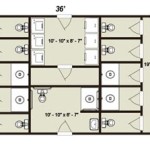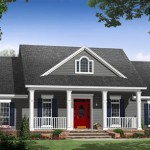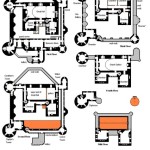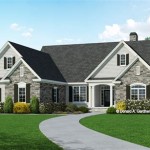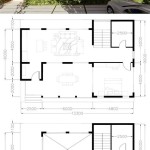Understanding the Essentials of Residential House Plan DWGs
A residential house plan DWG (Drawing With Graphics) is the technical blueprint that guides the construction of your dream home. It provides architects, builders, and engineers with a comprehensive plan that outlines every aspect of the home's design and construction. Understanding the essential components of a residential house plan DWG is crucial for ensuring that your project proceeds smoothly and meets your expectations.
1. Floor Plans
Floor plans are the foundation of house plans. They represent the layout of each floor, detailing the arrangement of rooms, walls, doors, windows, and built-in fixtures. Floor plans provide an overview of the home's flow, spatial relationships, and overall size.
2. Elevations
Elevations are graphical representations of the exterior walls of the house, showing their heights, proportions, and architectural details. Elevations are important for visualizing the facade of the home from different angles and ensuring its aesthetic appeal.
3. Cross Sections
Cross sections slice through the vertical plane of the house, revealing the interior construction and dimensions. They provide information about the height of rooms, ceiling heights, and the location of beams, joists, and other structural elements.
4. Roof Plans
Roof plans detail the geometry of the roof, including its shape, pitch, and materials. They provide information about the roof structure, the location of vents and chimneys, and the drainage system.
5. Construction Details
Construction details are specific drawings that focus on particular areas of the house, such as the foundation, framing, and plumbing systems. These drawings provide detailed specifications for materials, dimensions, and construction methods.
6. Electrical Plans
Electrical plans outline the electrical system of the house, including the location of outlets, switches, fixtures, and wiring. They ensure compliance with electrical codes and provide a safe and functional electrical environment.
7. Plumbing Plans
Plumbing plans diagram the water supply and drainage systems. They indicate the location of fixtures, pipes, valves, and drains, ensuring proper water flow and disposal.
8. Site Plans
Site plans illustrate the relationship between the house and its surrounding property. They show the location of the house on the lot, driveways, pathways, landscaping, and any outdoor structures.
9. Specifications
Specifications are textual documents that complement the drawings. They provide detailed information about the materials, finishes, appliances, and other components used in the construction of the house.
10. Legend and Schedule
A plan legend defines the symbols and abbreviations used in the drawings, while a schedule summarizes the materials and quantities required for the construction of the house.
Understanding these essential aspects of residential house plan DWGs is essential for ensuring that your dream home is built to your vision and meets all applicable building codes. By carefully reviewing and comprehending the plans, you can be confident that your project will proceed smoothly and meet your expectations.

Residential Building Dwg Free Cad Blocks

Residential Building Plan Detail Dwg File Cadbull

Residential Building Floor Plan Dwg File Cadbull

Floor Plan Free Cads

Multifamily Housing In Autocad Cad 7 95 Mb Bibliocad

40x62 Feet House Ground Floor Plan Drawing Dwg File

45 X 60 Residential Floor Plan Dwg File Plans House Duplex Design

Floor Plans Of A Two Y Hose Free Cad Blocks In Dwg File Format

Residential House Plan Cad Files Dwg Plans And Details

3 Story Residential Building In Autocad Cad 554 59 Kb Bibliocad

